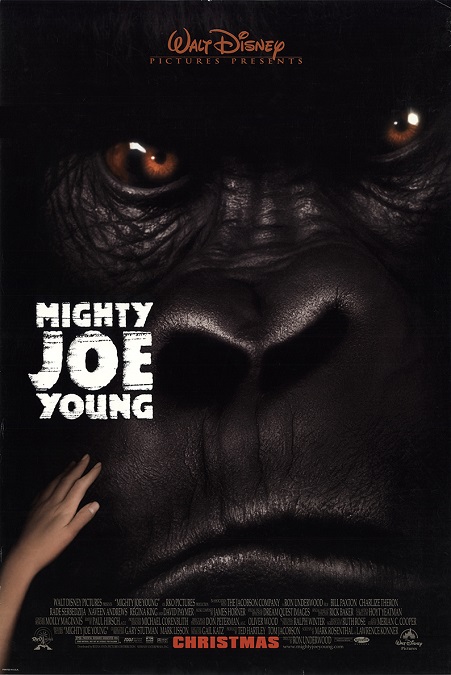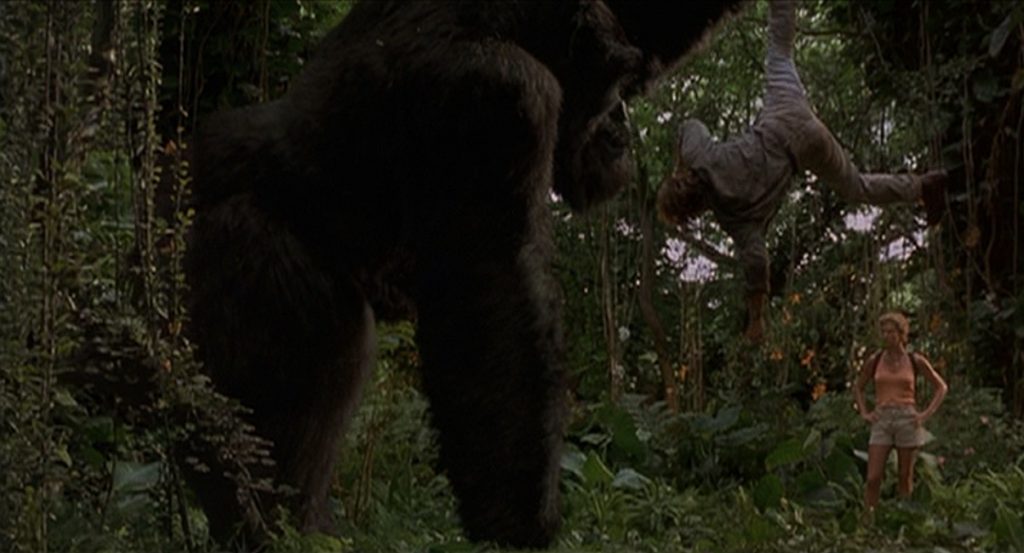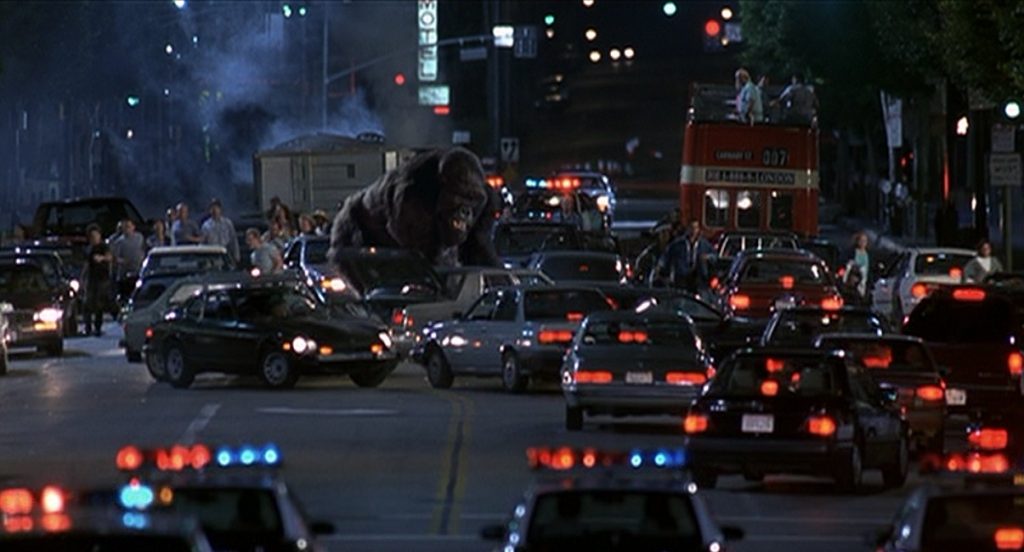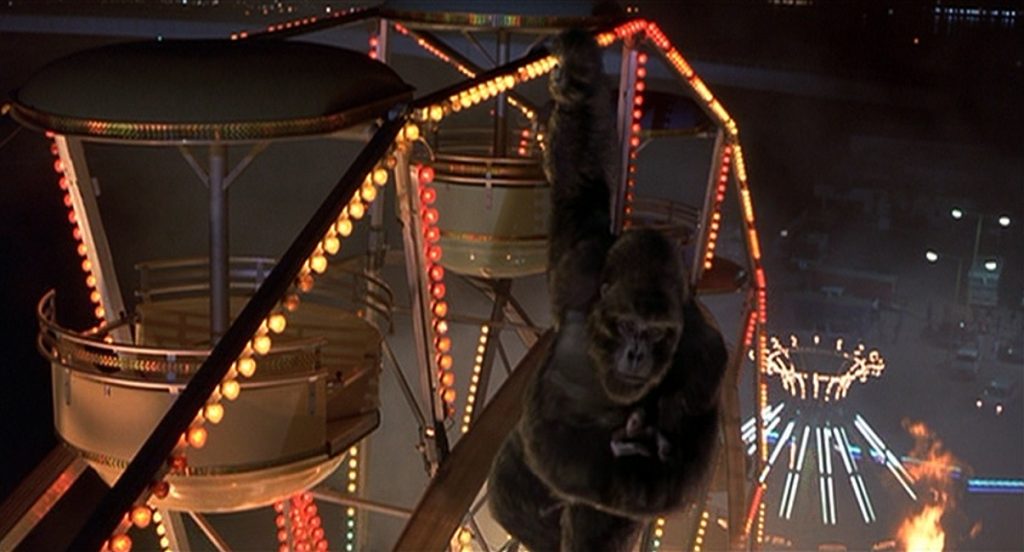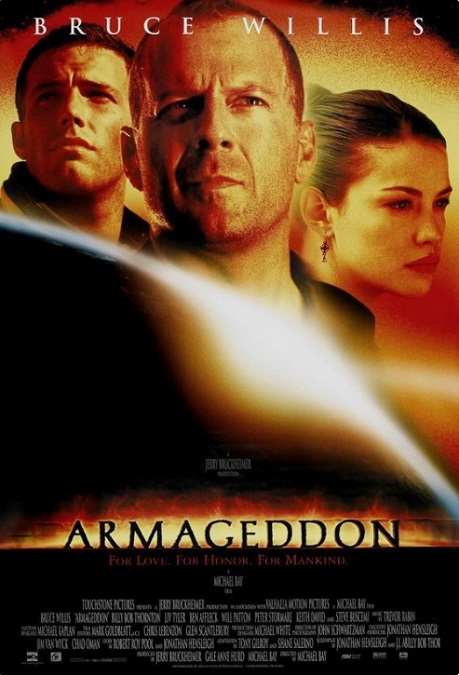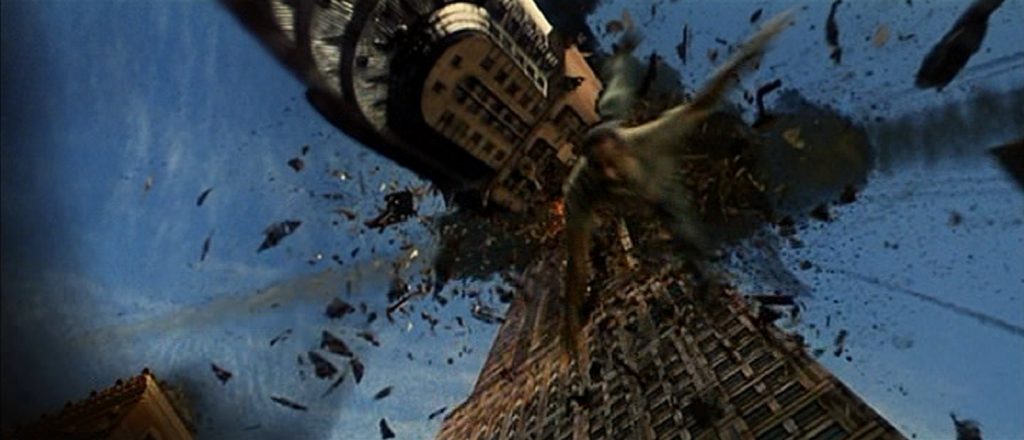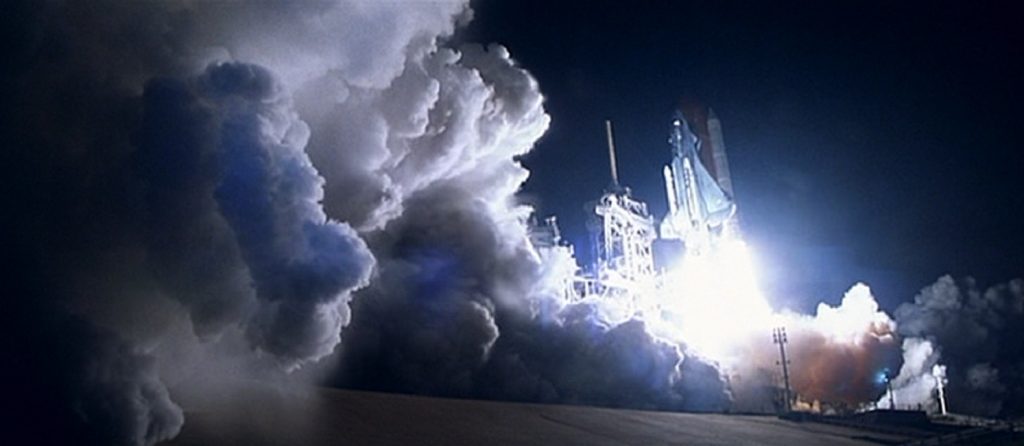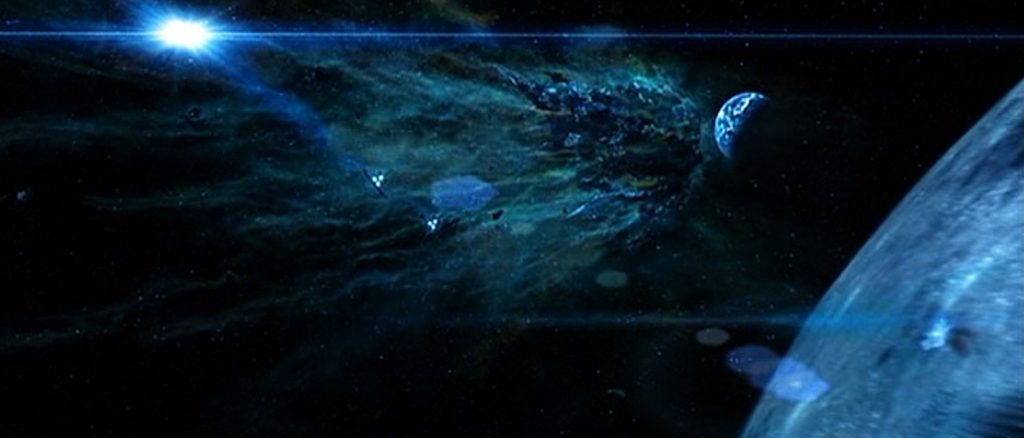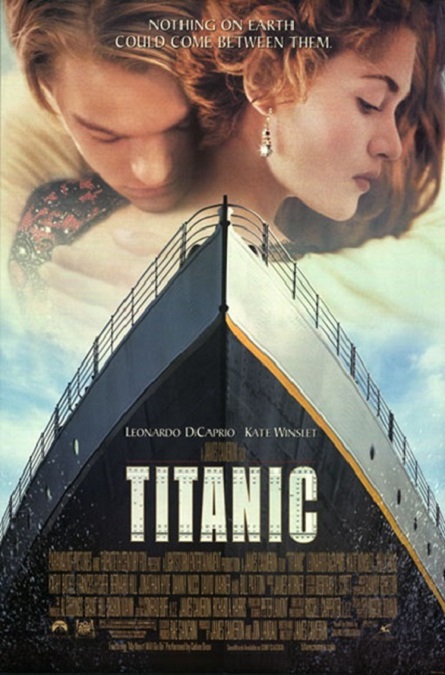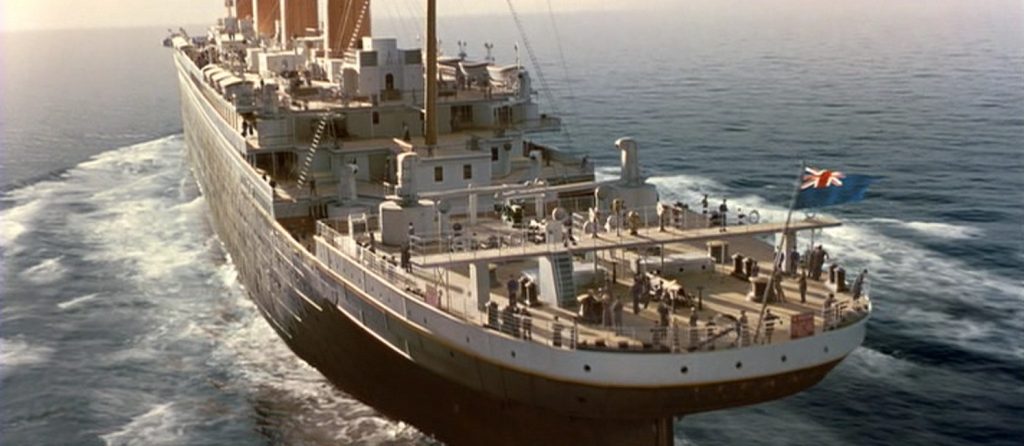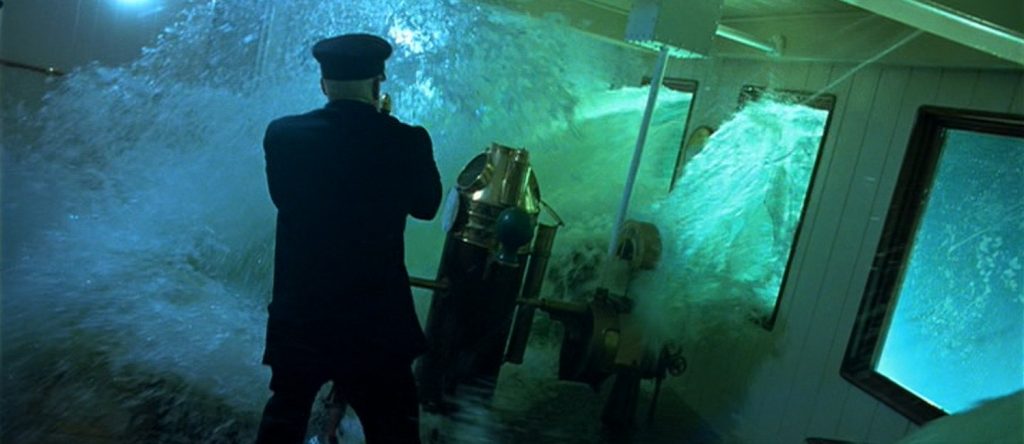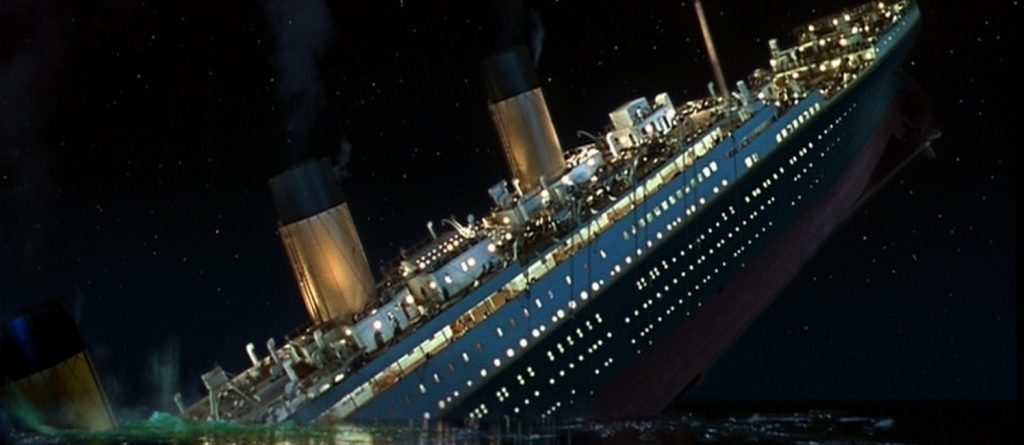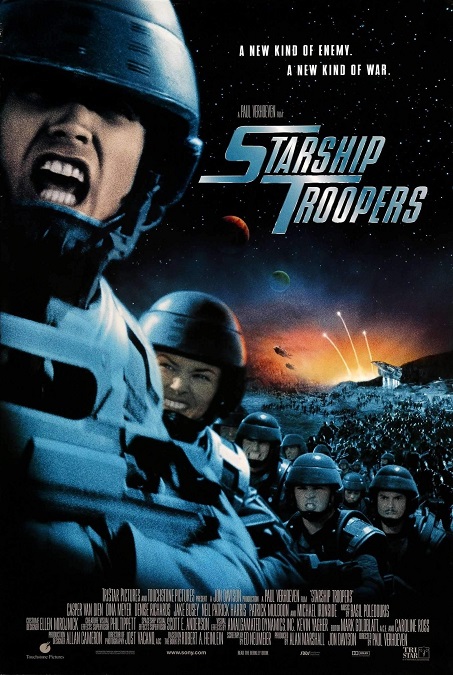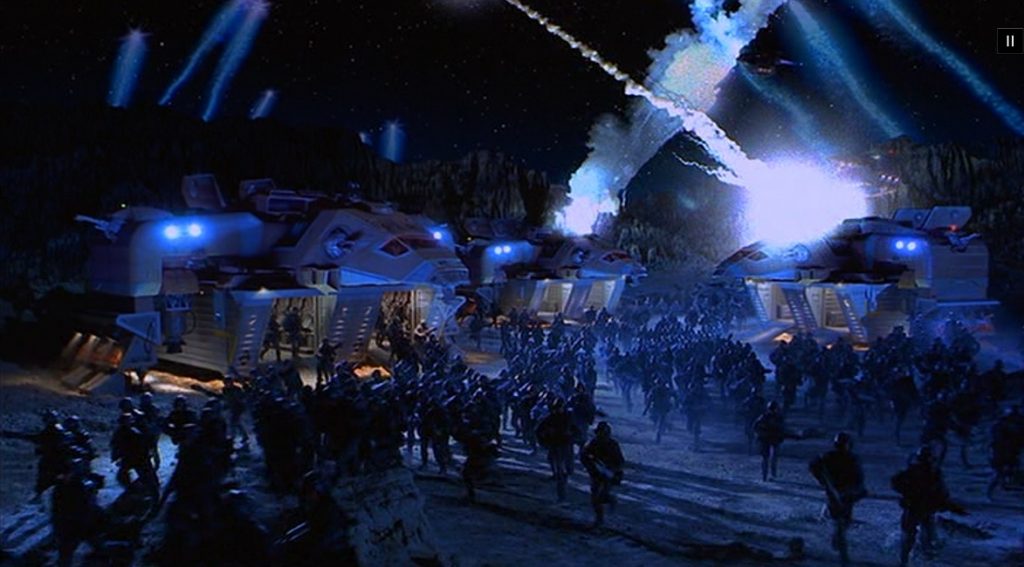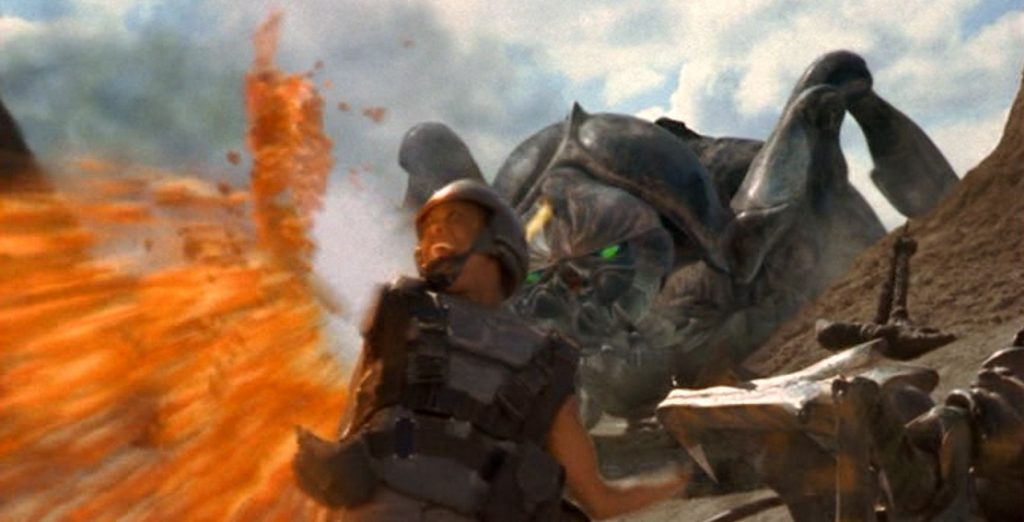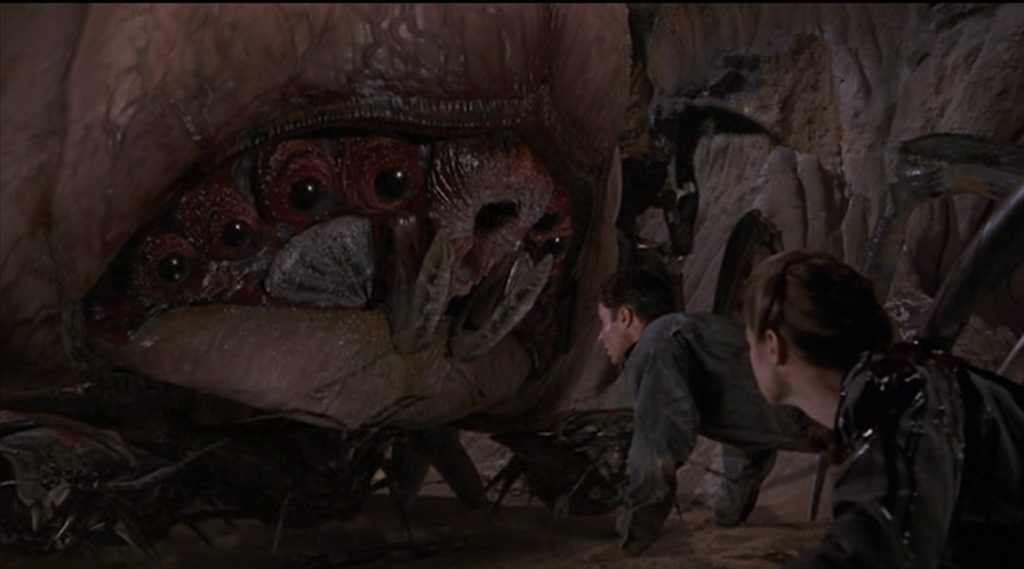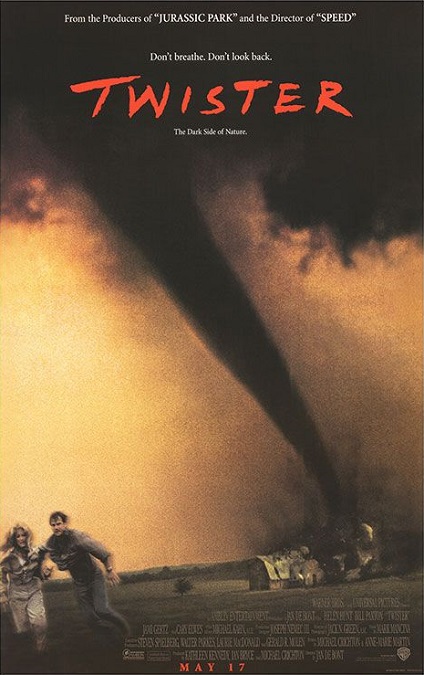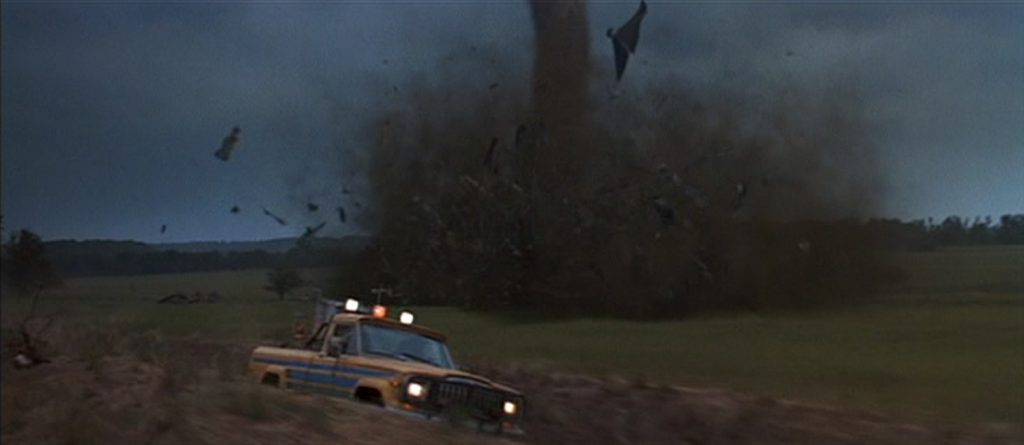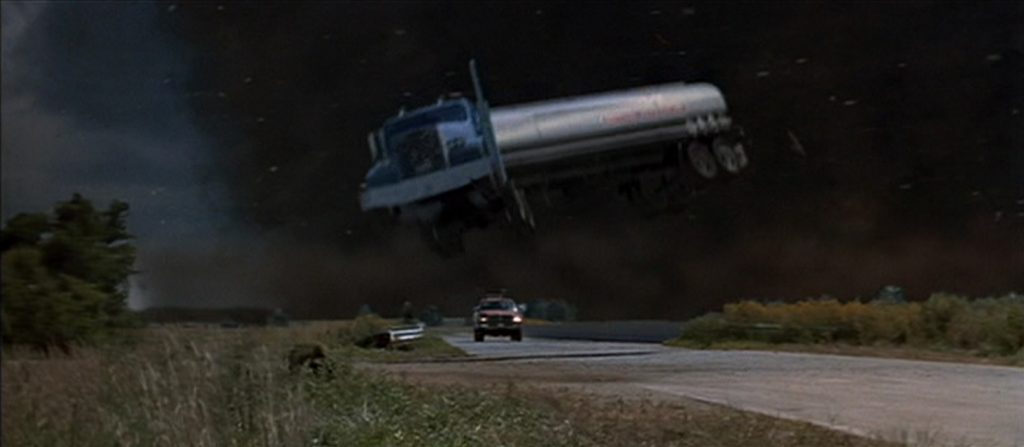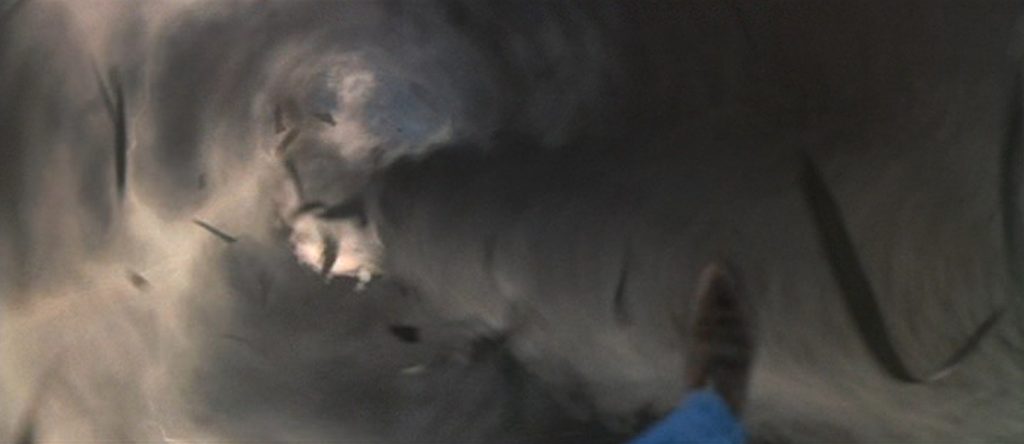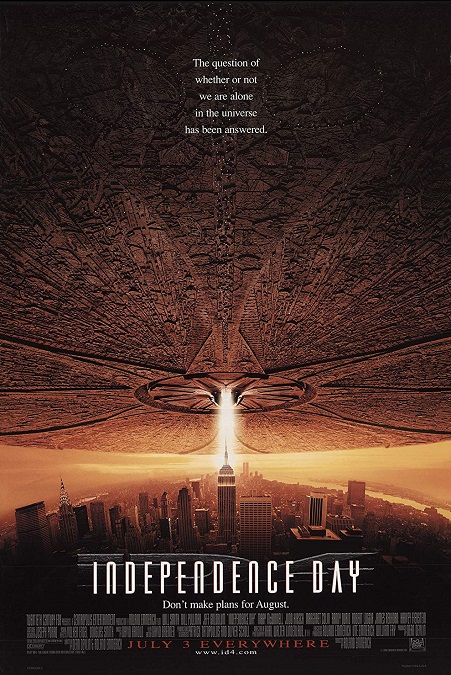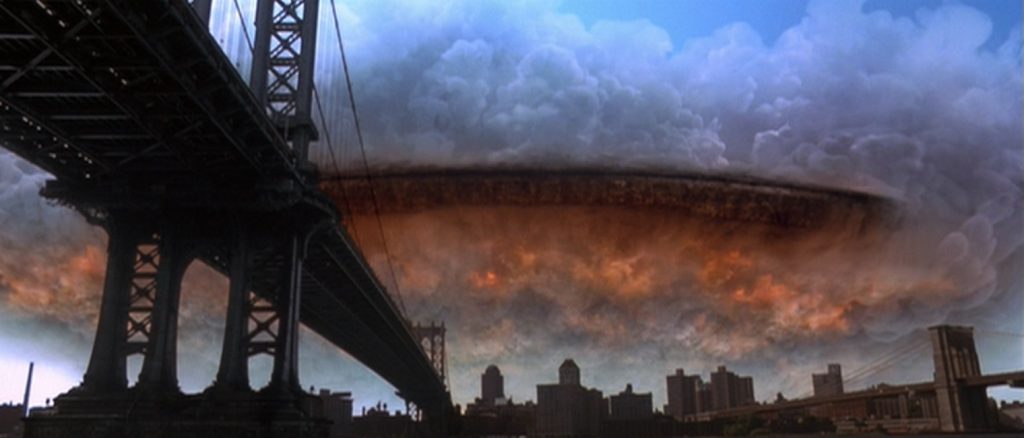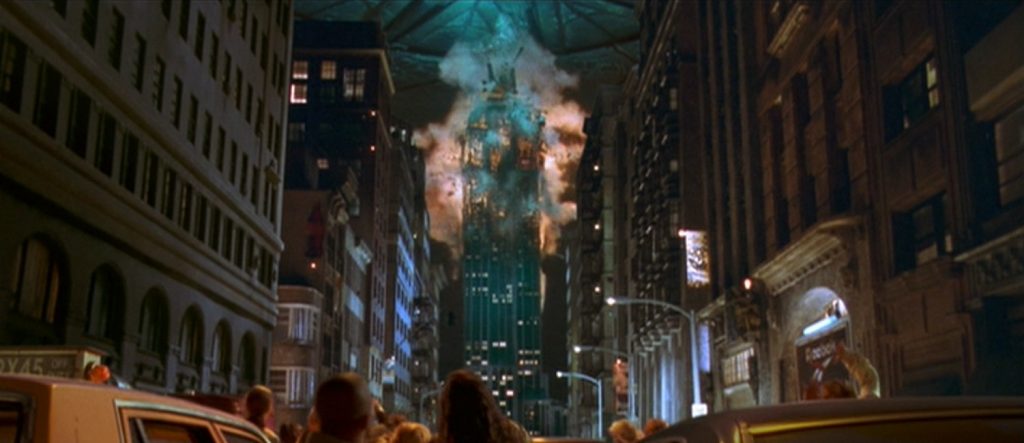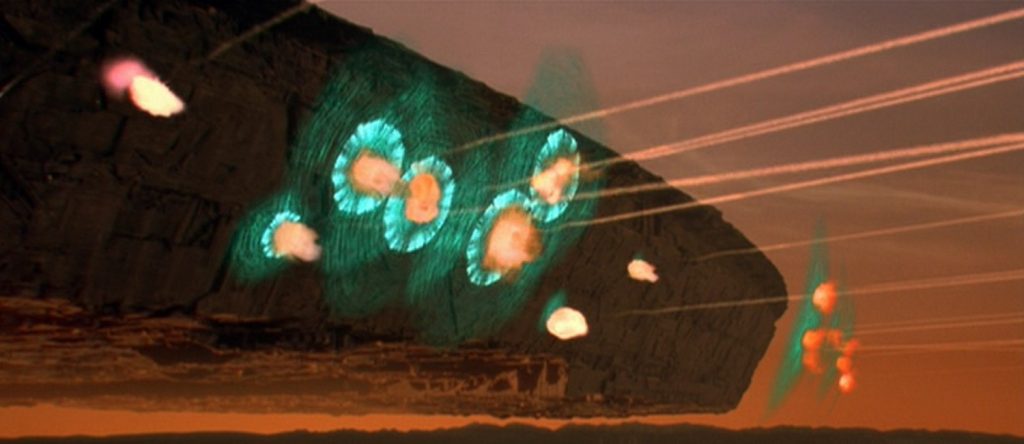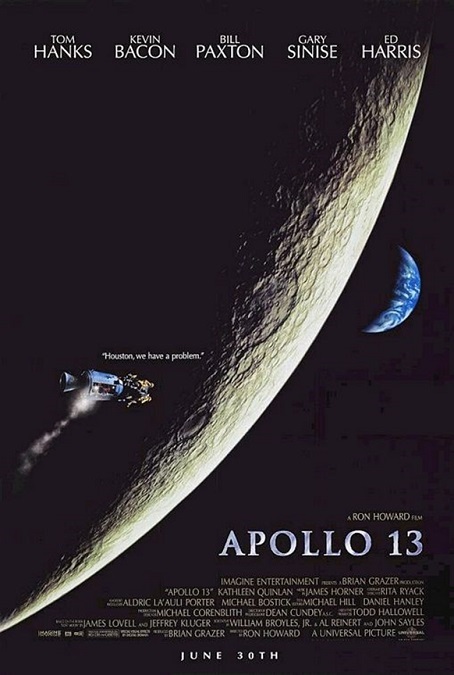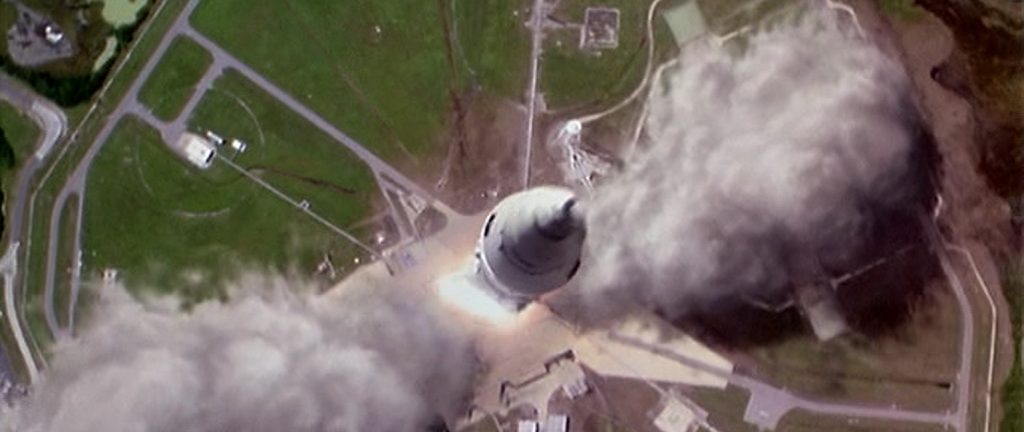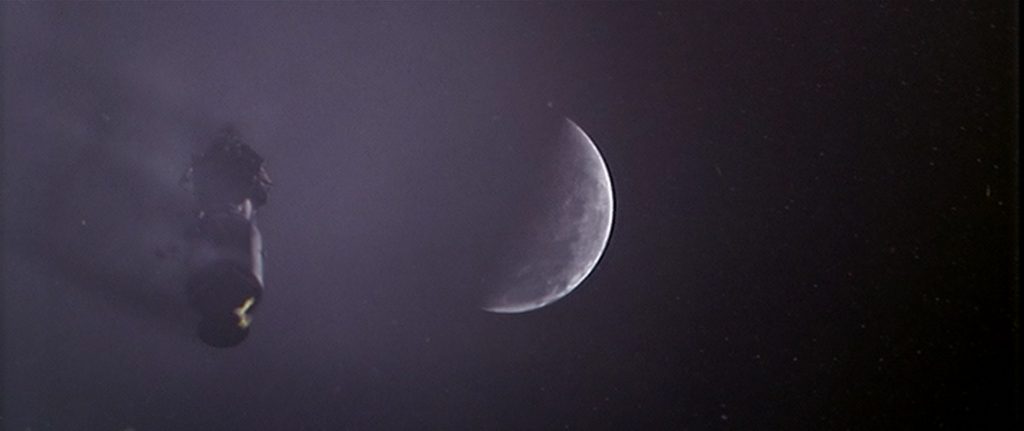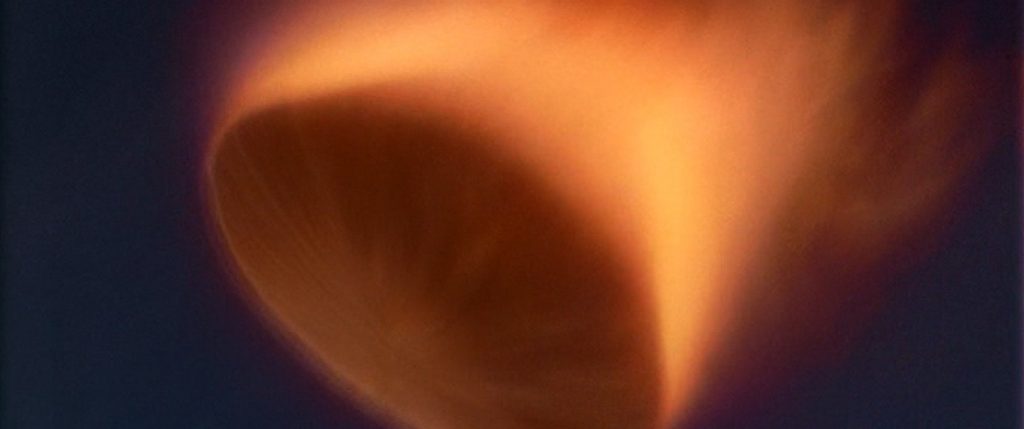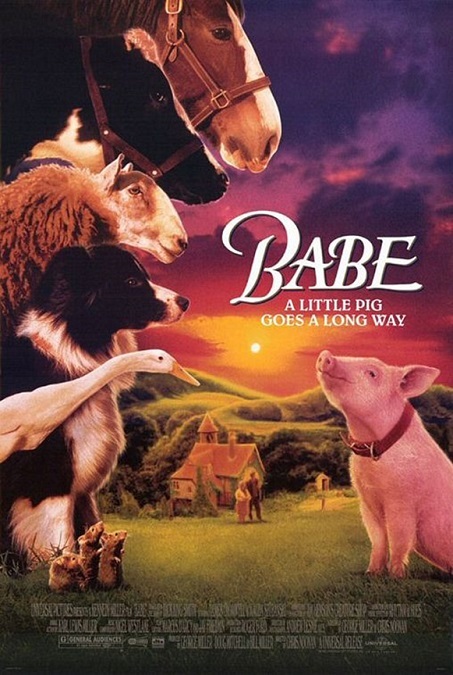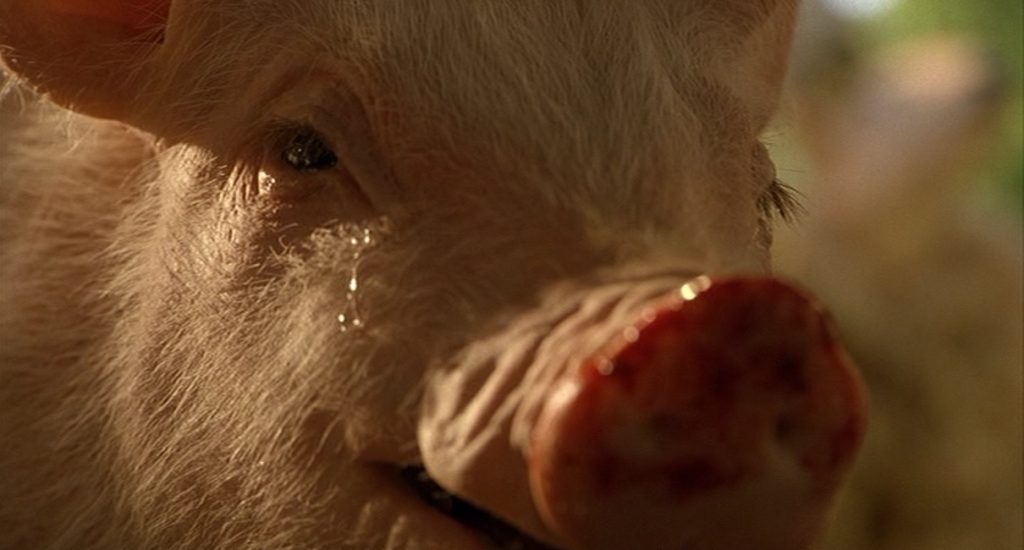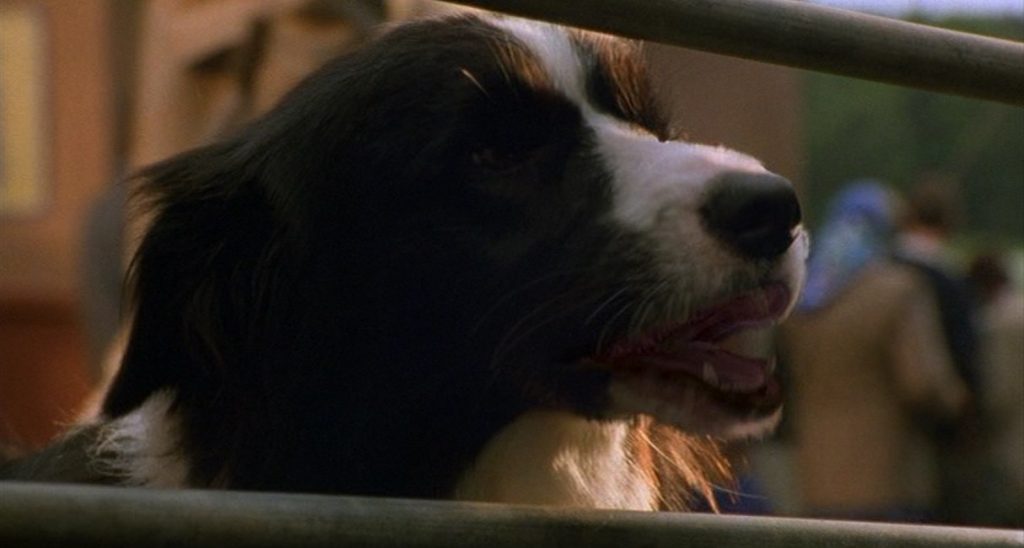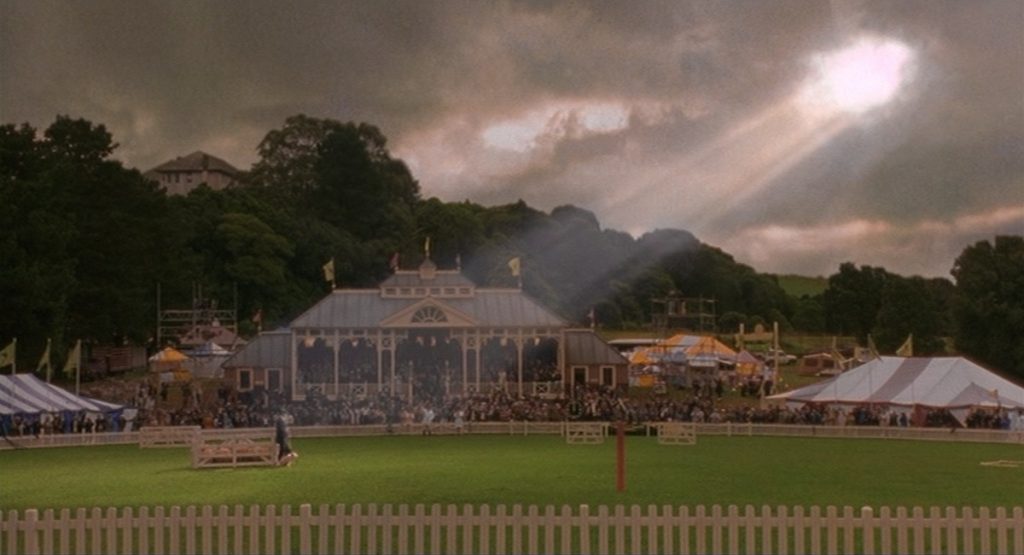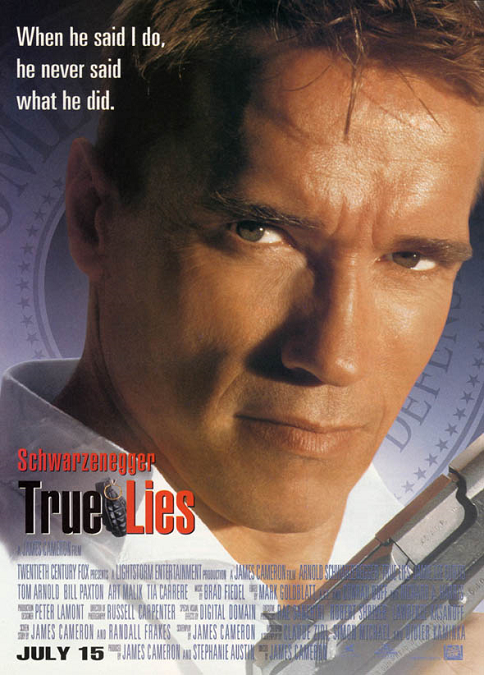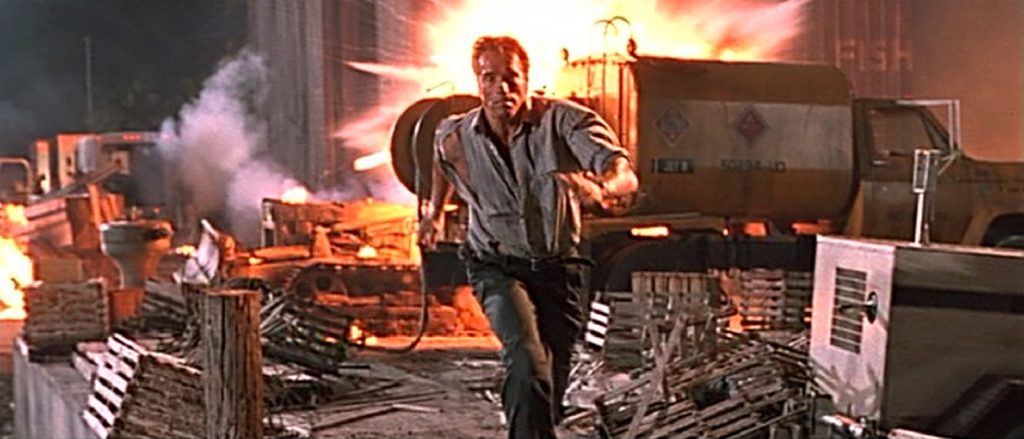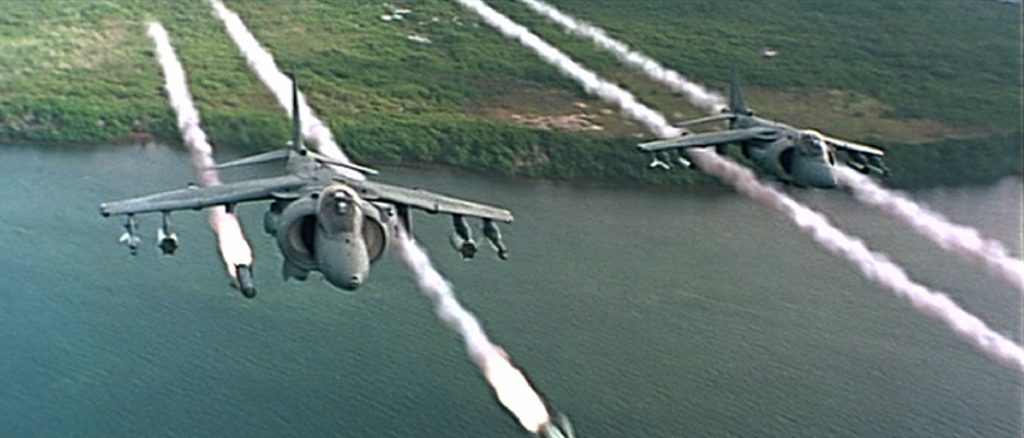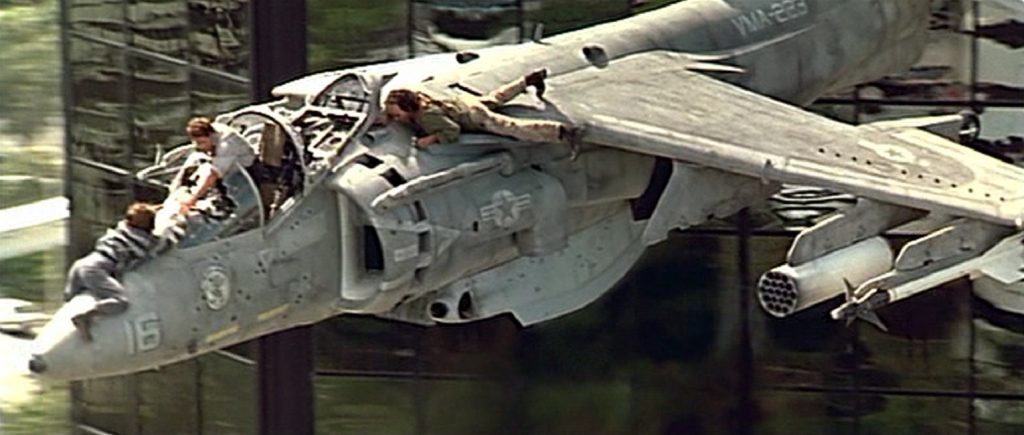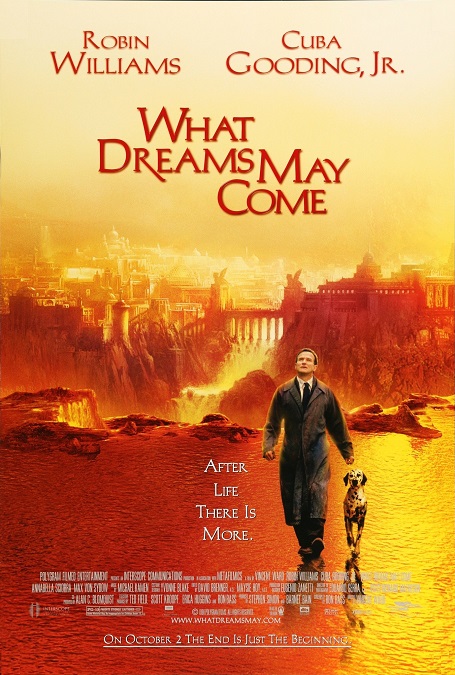
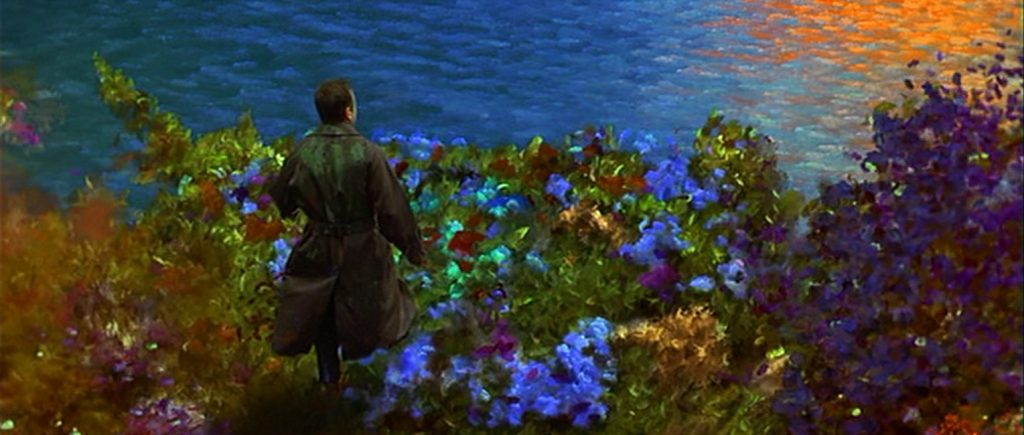
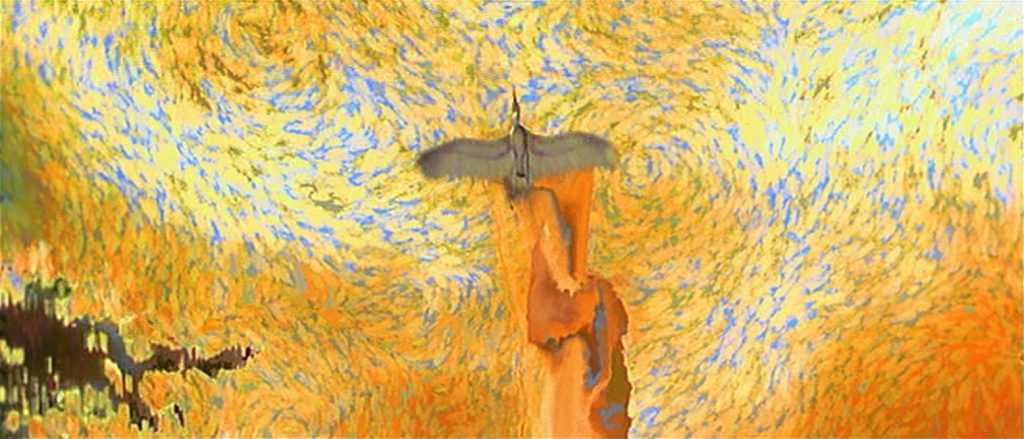
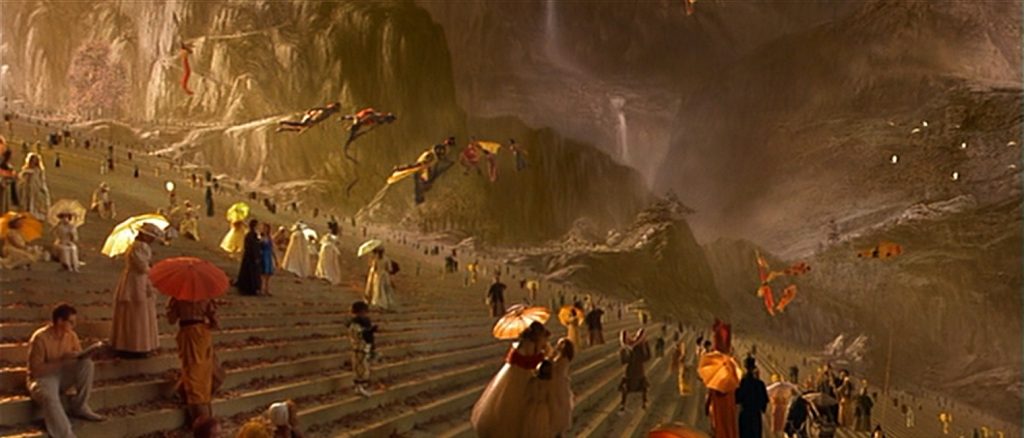
What Dreams May Come – 1998 (WINNER)

First off, I have to say that I love this movie, so I’ll be the first to admit that I might be biased towards its wonderful effects, though I’ll try not to gush. A lot of the visual effects were accomplished through some pretty spectacular production and set designs. In this movie, the afterlife, both the beautiful and the terrible, are depicted as a fantasy world that is as vast and varied as the souls that reside there.
The first real special effect took place after the main character, Chris, is killed in a car accident. He is visited by a spirit who helps to guide him into the afterlife. The spirit dances through the world of the living in a blur of color and motion. He slowly becomes clearer and clearer, as Chris learns to accept his own death.
When he finally leaves Earth, Chris awakens in a vast fantasy, a painting that his wife created. And this is where the movie really earned its Oscar for Best Visual Effects. The world is full of beautiful color and motion, and is made entirely of paint. The vibrancy of the colors, the way everything looked like paint, so much so that the brush-strokes are clearly visible. It was absolutely gorgeous. At one point, he imagines a fantastic bird into existence. It flies through the gold painted sky, streaking the paint as it passes. Chris decides to give the magical bird fanciful turquoise and mauve feathers, and the color just bursts from it in mid-flight. It all made for a beautiful contrast when the painted world was ready to become real.
The only thing that took me out of the story at this point was when Chris first arrives in the painted world. He grabs a painted flower and crushes it in his hands. The vibrant blue of the flower glows with a sparkling, glistening light of its own. The paint squishes through his fingers and drips to the painted ground. But then in the next cut, as Chris is looking at the mess of real paint in his hands, it is a dark almost black-blue that had lost its magical quality. I think his hands should have been covered in the same vibrant color of which the flower had been made.
In many scenes, people and spirits floated with grace and ease. They made it look as natural as walking. The same could be said for when Chris could breathe under water. There were scenes with floating people in beautiful fantasy outfits, a storm in a violent sea where damned souls swamp the sailboat, a field carpeted with the tortured upturned faces of trapped souls, and a plethora of fantastic imagery that combined all the skills of the movie-makers to give us one dream after another. Even the fiery entrance to Hell was filled with dark and disturbing images that held their own kind of terrible beauty.
The entire movie, aside from being a wonderful love story, was a just feast for the senses. There was a kind of a gothic aesthetic about the imagery that carried an air of fanciness and nobility. It was a style that really appealed to me. I think this movie really deserved the Oscar it won. The visuals were bold and innovative, giving the audience a grand epic full of effects that had never been done before.
